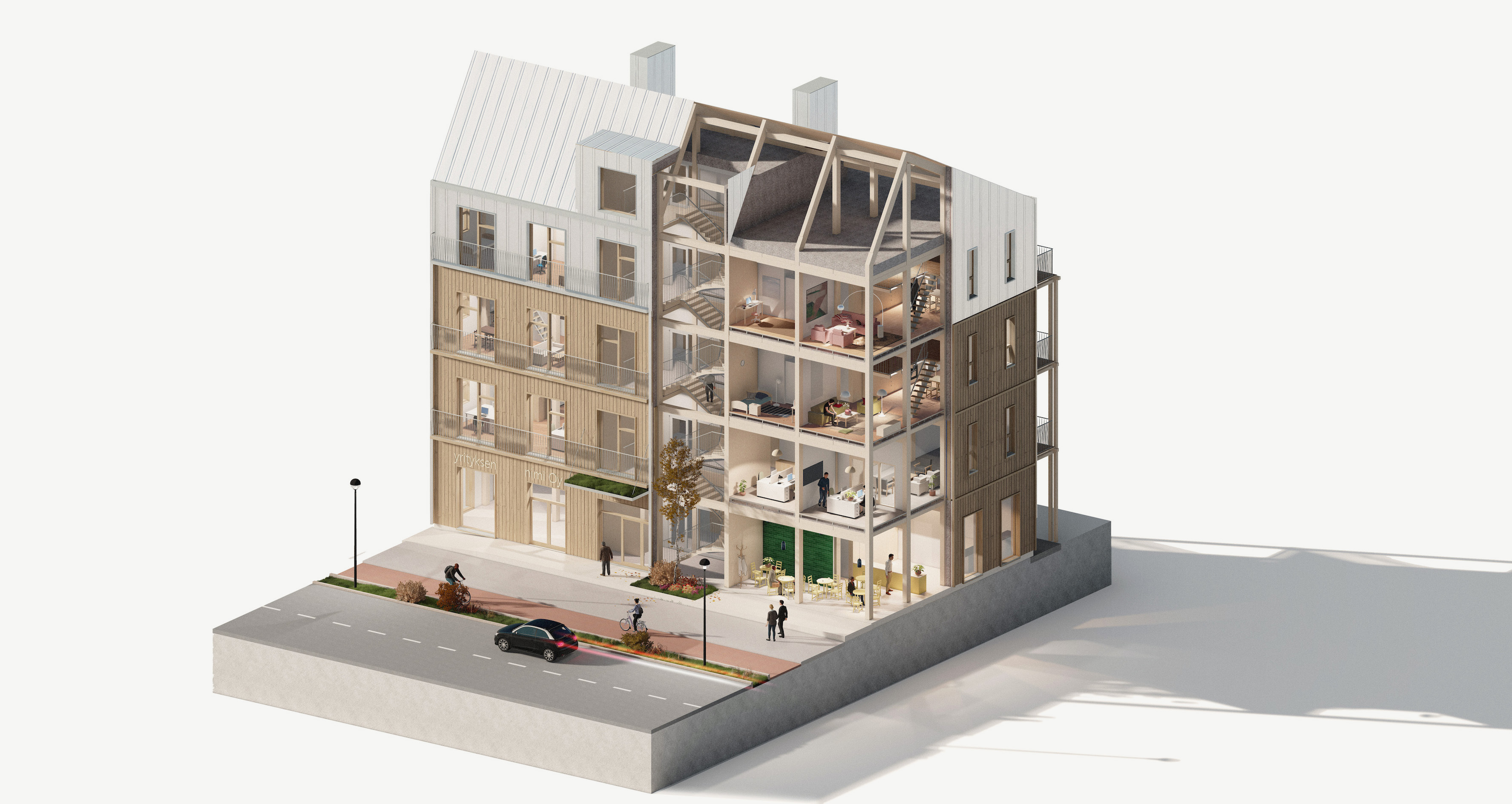Taika Pirilä's award-winning thesis explores circular economy in building design

Taika Pirilä
The thesis, for which the Finnish Association of Architects awarded the Wuorio Prize for Young Architects, deals with circular economy from the perspective of deconstruction. Although buildings should be designed to be long-lasting, according to the recently graduated architect, nevertheless, the reusability of building elements should also be considered in the design stage.
Dismantling can be done in many ways. A building can be destroyed with bulldozers into a pile of rubble and dust, in which case recycling is very limited and there is no place for reuse. When dismantling intact, the building is taken apart like a Lego house, and the parts are used for new purposes as they are – at least in the ideal case.
The English language offers several terms that describe the nature of the dismantling process, for example demolition and deconstruction. In the Finnish language, however, we are served by only one word, purkaminen, which is unnecessarily broad and tells about the the process as much as the color green about environmental friendliness.
In my diploma thesis “Designed for deconstruction – Design for deconstruction as the enabler of flexibility and resource reuse”, I delve into the phenomena related to dismantlability and the design methods that support it. The thesis consists of two parts: a theoretical part and a design part. The design part includes a plan of a hybrid block located in the Linnaniemi district of my home city, Turku.
The potential of reuse influences structural solutions
Currently, buildings are designed to be constructed – not deconstructed. However, a deeper examination reveals that the benefits of intact dismantling have already been identified. These include, for example, reduction of the use of virgin materials and energy consumption, a safe construction and deconstruction process, and the preservation of carbon that is stored in buildings and their parts. Design for deconstruction, however, has not been established as a part of our practice, even though the built environment’s sustainability is a highly topical issue.

Design for deconstruction faces some challenges, such as prejudices and attitudes towards used building components and their condition. Furthermore, another challenge is financial profitability, as new building components are often more easily and cheaply available. Moreover, it is difficult to predict the final economic benefits of design for deconstruction in light of the uncertainty of the reuse potential of resources.
One of the most significant factors that make direct reuse difficult are the challenges in proving the eligibility of the used building components. Uncertainty about proof of eligibility has even led to situations where the reuse of materials in pilot projects has been hindered.
In order for dismantlability to be worthwhile, the resources must be suitable for reuse and recycling. For example, when choosing the solution for the new building’s load bearing frame, one can consider the reuse potential of the building parts. The reuse of beams and columns can be easier than load-bearing walls, which are often tailored to a specific project. In addition, the selected materials must not be toxic or harmful, and they should endure several use cycles. In this way, the parts and materials of the building also retain their value after the first use.
Simple structures allow deconstruction
There are many ways to design for deconstruction. For example, design strategies include mechanical joints that can be removed intact, building parts of a suitable size and simple geometry, realistic installation tolerances, and avoiding additional coatings.

Design for deconstruction often focuses on the detail level: for example, a window should be removable without dismantling the cladding. On the other hand, dismantlability culminates in simple principles; The key is easy-to-understand, simple solutions, where building layers with different life cycles and maintenance needs are separated from each other and all the building parts are comprehensively documented.
As an invention, the circular economy is ancient, and lessons can be learned from the past for the present and the future. We can study, for example, the modifiable and portable structures of indigenous people, but it is not necessary to look quite that far: For example, the deconstruction and reassembling of log frames have centuries-long traditions in Finland. Furthermore, the lime mortar used in old brick buildings allows the masonry to be dismantled without breaking the bricks.
Reuse requires getting used to a new aesthetic
The thesis process also made me reflect on the aesthetics related to design for deconstruction. We are familiar with smooth, white surfaces, behind which both load-bearing structures and building technology are hidden. Reused materials, avoiding coatings, exposed technology, visible joints and other visual information about construction methods create an unusual aesthetic that certainty takes some time to get used to. Therefore, a shift not only in our attitudes towards the reuse of building parts is necessary, but also in the approach to the aesthetics created by dismantlability.

With the climate crisis prevailing and virgin materials becoming scarcer, wise use of resources is essential. Using existing buildings as they are or adapted to new uses is almost always the best option from an environmental point of view. The next best option is to utilise the buildings as material banks. However, this should be done with cultural and historical values in mind. And when a new building is constructed, the conditions for future generations to implement circular economy must be enabled.
Buildings should therefore be designed to last far into the future and to adapt to changing needs as well as to be maintained and repaired. And when the moment of deconstruction of a building designed in such a way is at hand, it is not the end of the story but the beginning of a new chapter.
Taika Pirilä graduated as an architect from Aalto University in 2023. Her thesis "Designed for Deconstruction – Design for Deconstruction as the Enabler of Flexibility and Resource Reuse" was awarded the Wuorio Prize in the spring of 2024. The thesis was advised and supervised by Professor Antti Lehto. Link to the thesis (in Finnish)


